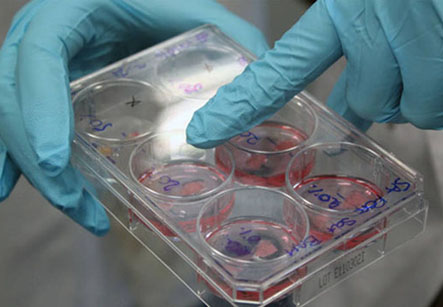IVM In Vitro Maturation
Introduction
In-vitro maturation (IVM) involves removal of eggs from the ovaries and their collection when they are still immature. They are then matured in the laboratory before undergoing fertilization.
The difference between IVM and conventional in vitro fertilization (IVF) is the time of collection of eggs. In IVM; they are immature at time of retrieval. This reduces the requirement of medications and preparation before collection of eggs as compared to those in the conventional IVF.
The candidates for IVM include:
1. In case of the woman being susceptible to development of OHSS (ovarian hyper-stimulation syndrome – a potentially dangerous over-response to fertility drugs),
2. In case of PCOS (polycystic ovarian syndrome)
3. In cases where the cause of a couple’s infertility has been identified as a result of male factor only.
Iran ranks first in the region in terms of infertility treatment studies

The procedure for IVM is as follows:
1. In the first step, the eggs are retrieved as in case of conventional IVF, although in younger stages of maturation. This means the woman need not take as many ovary-stimulating hormones before collection.
2. In second step, the eggs are matured artificially in a dish placed in an incubator in the fertilization laboratory for about one to two days.
3. The third step involves fertilization of mature eggs with sperms of the partner or donor depending on whether the male partner is a cause of infertility or not. The embryos thus formed are cultured and transferred to the womb as in case of conventional IVF treatment.
Success of IVM:
The chances of the woman becoming pregnant with IVM are similar to those with conventional IVF, but there are few additional risks:
1. As the eggs are immature at time of their retrieval, the number of eggs collected may be less as compared to a conventional IVF cycle.
2. There are chances of the eggs not being sufficiently matured to be fertilized with the sperms of the partner or a donor.
3. Also, there is not enough evidence of safety of this method as the number of children born with IVM is still small and this is a comparatively new technique.
4. Risks involved due to general anesthesia.
It is determined prior to the procedure whether the woman is susceptible for OHSS more than other women. The suitability of the technique for a particular woman is decided by the gynecologist or fertility specialist.
Before the procedure:
1. The woman having problems in getting pregnant should first contact her general practitioner or gynecologist. The doctor takes thorough medical history and performs a physical examination. Some medications, tests or lifestyle changes may be recommended.
2. The gynecologist may refer the patient to a fertility specialist at local hospital or fertility clinic.
3. At the fertility clinic, the full fertility history is taken and an examination is carried out again.
4. Some simple treatments or medications may be offered before IVF or IVM are considered necessary.
5. If the decision of IVM is taken, the patient is questioned first about medical and social history. This allows the doctor to determine the impact of a potential birth on the baby as well as on any other children the couple is having before.
6. Blood tests are advised for the woman as well as the partner pertaining to general health and also include HIV and Hepatitis B & C tests.
7. The woman is also screened for immunity against Rubella (German Measles). The hormonal profile is also assessed by taking a blood sample taken early in the menstrual cycle. It helps in ruling out any difficulty in obtaining eggs and also to detect any hormone imbalance.
8. The treatment plan, the risks involved and possible results of the procedure are discussed with the patient.
9. Consent forms about the use and storage of the sperm, eggs or embryos are signed by the patient and also the consent for not disclosing identifying information is taken.
10. The fertility clinics also provide opportunities for counseling of the woman before the procedure.